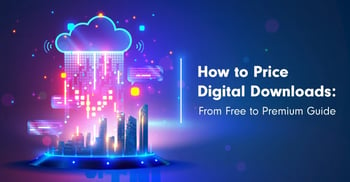SaaS Revenue Recognition & ASC 606 Compliance Guide
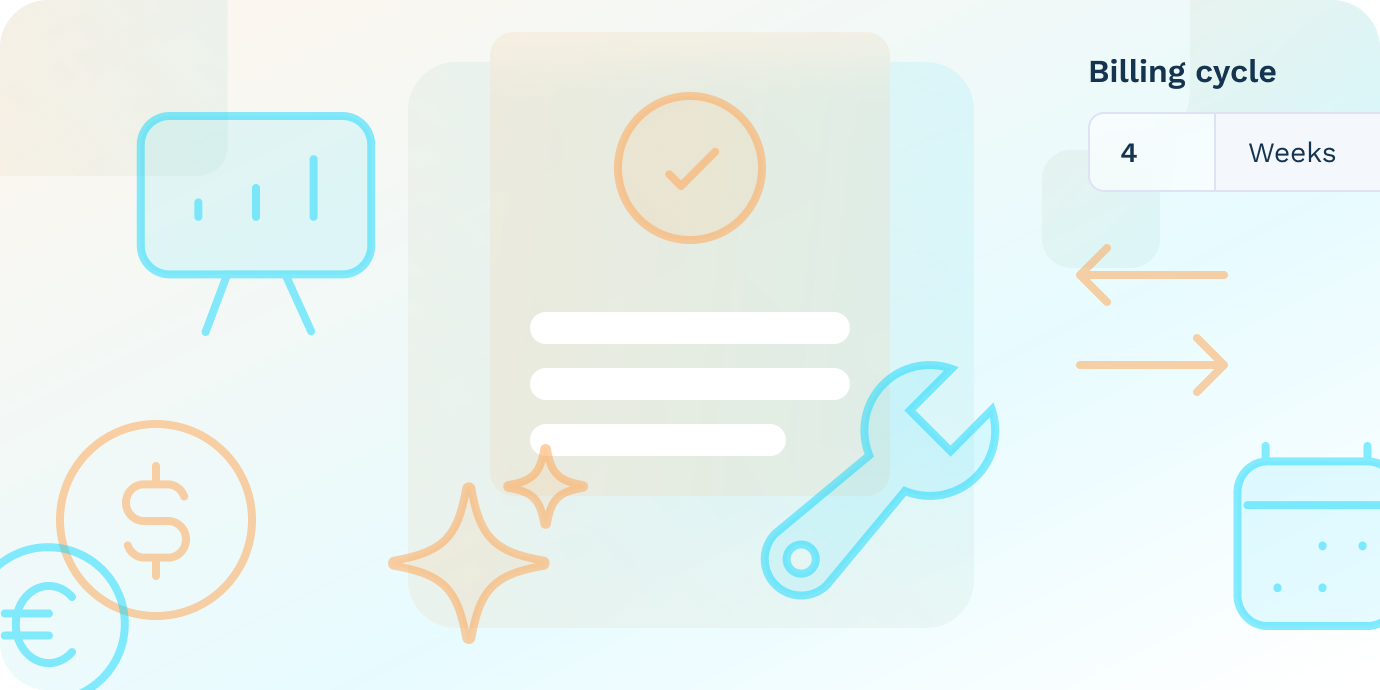
As of 2025, the SaaS market is now valued at $315.68 billion, and 95% of businesses rely on multiple SaaS applications for their core operations. So, with the SaaS industry enjoying increasing popularity, you might be thinking life is good for SaaS developers.
Making a profit during an in-demand market might seem simple. But in reality, SaaS businesses are notorious for having difficulties keeping up with revenue recognition approaches, including IFRS 15 or ASC 606 compliance.
With accounting regulations on how to calculate and report revenue constantly evolving, in addition, to SaaS strategies employing various growth hacking or video game monetization strategies such as discounts, coupons, bundles, and experimenting with pricing - digital goods revenue recognition has become a complex operation, to say the least!
This complexity is particularly pronounced for software and video game companies that often deal with hybrid monetization models combining subscriptions, one-time purchases, and in-app purchase revenue. For instance, video game developers offering "games as a service" face unique challenges when recognizing revenue from season passes, virtual currencies, and cosmetic items that may be purchased but used over varying timeframes.
To all of these challenges, one has to mention subscription billing and tax compliance challenges, especially when selling globally.
This makes it very difficult for business owners to offer comprehensive financial reporting to investors or shareholders or even have a correct understanding of the company’s performance, themselves.
Let’s dive into what SaaS revenue recognition is, understand what makes it unique, and what challenges subscription business owners face.
What is Revenue Recognition?
As tempting as it might be to update your revenue statements once cash starts flowing into your account, considering accounting principles is crucial here.
Cash isn’t revenue, and treating the two as different entities is key to keeping your business moving forward.
Revenue recognition represents the process of identifying revenue earned from various engagements and acknowledging it in the company’s financial statements under the Generally Accepted Accounting Principle (GAAP).
Carefully overseeing this process is mandatory for all businesses because it ensures that revenue is reported accurately throughout time. But for SaaS products, revenue recognition tends to be rather complex because of the subscription business model itself. What does that mean exactly?
Well, let’s assume that a customer chose an annual plan with a total value of $12,000. This would mean they would be required to pay $1000 monthly for an entire year. Remember, the $12,000 revenue cannot be recognized immediately. From an accounting perspective, the value of an annual contract will only be recognized in 12 months' time.
Revenue is recognized when the contractual obligations are satisfied.
How To Calculate Revenue Recognition
As a SaaS company, you know there are multiple types of revenue that need to be considered. From upsells, cross-sells, or downgrades to one-time installation fees, SaaS businesses MUST calculate these revenue sources separately.
Proper revenue recognition basic calculation for SaaS products is easy and straightforward:
Revenue Recognition = ARR/MRR for each month of the contract duration
What is Accrual Accounting?
From an accounting perspective, the accrual method is among the most popular options out there, specifically because it allows SaaS developers to track MRR. (Monthly Recognized Revenue).
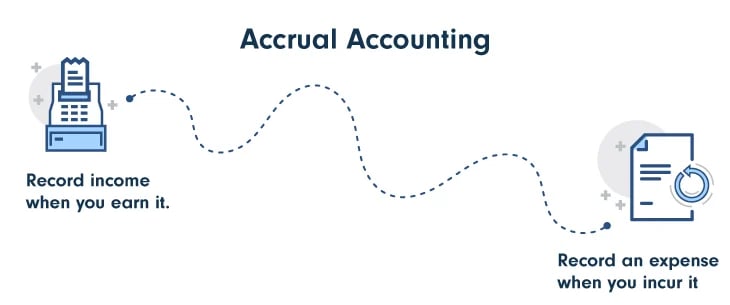
This method helps record transactions in real time, regardless of when the cash actually comes in. It gives company owners or product developers a more detailed understanding of what their cash inflows and outflows are, allowing them to manage their financial resources better and plan their next moves accordingly.
Accounting Standards and the Birth of ASC 606
Accounting standards are the rules and guidelines that regulate financial reporting. This makes the entire ASC 606 compliance landscape volatile and prone to constant changes and modifications. The Generally Accepted Accounting Principles (GAAP US), overseen by the Financial Accounting Standards Board (FASB), enforces revenue recognition within the United States, whereas other countries follow the International Financial Reporting Standards (IFRS), specifically IFRS 2015.
Why are accounting standards important? Well, for three very important different reasons.
Consistency: Accounting standards represent a framework within which companies can record financial transactions. Used across industries and companies, business owners, investors, and shareholders find it simple to analyze and make informed decisions.
Transparency: By keeping financial details clear through accounting standards, analyzing financial performance, and consequently, making growth decisions are considerably simplified.
Accountability: With accounting standards in place, SaaS and software companies can be held accountable for errors or misstatements.
SaaS Accounting: ASC 606
In 2014, the revenue recognition requirements lacking in plenty of relevant financial details. Additionally, the accounting requirements of the U.S. GAAP were thought to be conflicting in particular areas. As a response, in a joint effort, Financial Accounting Standards Board (FASB) and the International Accounting Standards Board (IASB) created ASC 606.
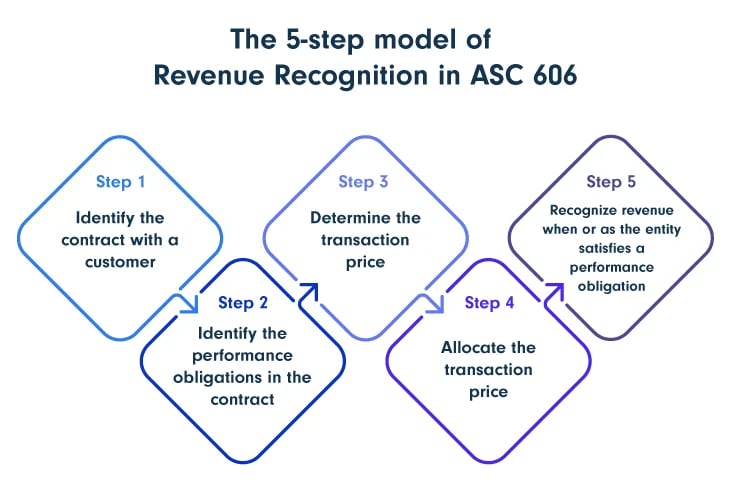
ASC 606 is a flexible yet robust five-step framework to drive revenue recognition consistency. It applies across various industries and aims to eliminate many inconsistent and ambiguous practices. Here's an overview of the process:
Here's an overview of the process:
Step 1: Identify the contract with a customer.
This step describes the criteria to be met when establishing a contract with a client.
Step 2: Identify the performance obligations in the contract.
In this phase, we're looking at how performance obligations outlined in the contract should be accounted for.
Step 3: Determine the transaction price.
This step describes the elements to consider when setting the transaction price.
Step 4: Allocate the transaction price.
Here, guidelines on how the transaction price is allocated across all performance obligations are provided.
Step 5: Recognize revenue when or as the entity satisfies a performance obligation.
This step clarifies how revenue will be recognized once the business meets all performance obligations.
PayPro Global's Merchant of Record platform streamlines ASC 606 compliance by applying this five-step model to your SaaS business. For example, when a customer purchases your annual software subscription with included implementation services, the system automatically identifies the separate performance obligations (software access and implementation), allocates the transaction price based on standalone selling prices, and properly recognizes revenue as each obligation is fulfilled.
The 6 Metrics You Need To Keep Track Of
It’s important to keep tabs on revenue recognition, and one effective way of doing that is by tracking certain metrics.
ARPU
For most SaaS companies, ARPU (Average Revenue Per User) is a key metric that offers gainful insights into how much revenue is actually generated from customers or subscribers over a specific period.
When it comes to revenue recognition, ARPU helps SaaS developers estimate future revenue streams and understand how effective your product pricing and marketing strategies are, which is really why it’s necessary to keep an eye on this metric.
CAC
CAC (Customer Acquisition Cost) measures the cost of acquiring a customer. Comparing CAC with LTV (Lifetime Value) is important to obtain an accurate view of this metric. This allows you to understand whether your acquisition efforts are, in fact, profitable. And that's what actually matters in revenue recognition. You could be spending too much on acquiring customers without recovering your investments.

Tracking this metric will help you understand where you are and evaluate your marketing strategies to ultimately optimize your acquisition expenses and improve customer lifetime value.
Revenue Growth Rate
Revenue Growth Rate is an essential metric in revenue recognition because it tracks how your SaaS's revenue increases or decreases over time. Using this metric, you can monitor changes in your business performance and make strategic decisions to gain more market recognition and win over subscribers.
Keeping your revenue growth rate high will make your business more attractive to investors, indicating an excellent potential for future growth.
Deferred Revenue
Also known as unearned revenue, deferred revenue represents payments made to a company in advance of the product being delivered.
In your balance sheet, deferred revenue is perceived as a liability because this metric reflects unearned value for products or services owed to the customer. By recognizing deferred revenue, SaaS model companies can accurately reflect their financial performance.
By recognizing deferred revenue as a liability, the company can accurately indicate its financial position and provide investors and other stakeholders with a more realistic picture of its performance.
Churn Rate
For SaaS developers, churn rate is a metric that matters greatly to their business success. It measures the percentage of customers who choose to discontinue your service. Tracking this metric is also crucial information on how well your company is doing. Regular evaluations of your customer base will help you reduce user losses, identify lost opportunities and ultimately optimize revenue.
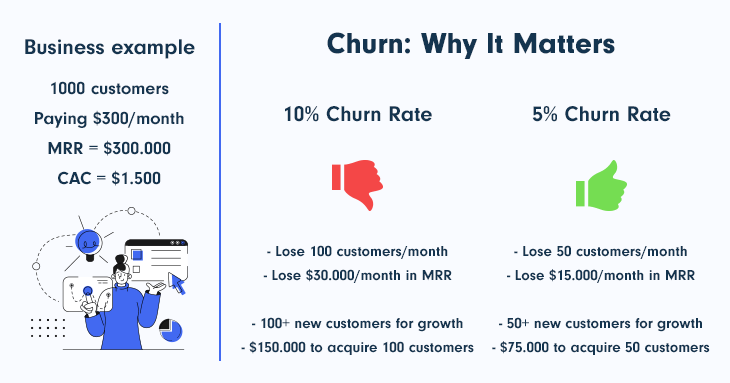
In revenue recognition, the churn rate is relevant because it impacts financial forecasting and reporting. If your churn rate is high, it will certainly negatively influence your financial statement and company valuation. By monitoring other key metrics, you can be proactive in lowering your churn rate.
PayPro Global's advanced reporting tools provide predictive analytics that help SaaS companies forecast revenue with remarkable accuracy. This capability is particularly valuable for investor presentations and strategic planning sessions.
eCommerce Partner
Thrive with the industry's most innovative all-in-one SaaS & Digital Goods solution. From high-performing payment and analytics tools to complete tax management, as well as subscription & billing handling, PayPro Global is ready to scale your SaaS.
Sell your SaaS globally with PayPro Global!
Key Challenges of SaaS Recognition
While revenue recognition is an important factor for SaaS and software businesses, it does present several challenges. Let's dive in and understand the five most common ones.
The Elaborate Nature of Subscription Models
SaaS companies face unique challenges in developing sound revenue recognition policies due to their sophisticated subscription models and usage-based pricing structures. Businesses must have clear, consistent rules for recognizing income accurately, regardless of the complexities they may encounter.
This challenge is magnified when dealing with subscription plan changes. PayPro Global's Merchant of Record handles complex subscription billing modifications automatically, ensuring proper revenue recognition when customers upgrade, downgrade, or make other changes to their subscriptions.
When a customer upgrades mid-billing cycle, the system prorates the remaining value of the original subscription, creates the appropriate credit, and recognizes the new revenue stream according to accounting standards – all without manual intervention.
Ongoing Monitoring Of Revenue Recognition
Subscription businesses are the definition of ongoing processes for establishing strong income streams. With so many dynamic components, SaaS businesses really need to have a monitoring process in place that allows them to adjust revenue recognition policies following subscription changes that may appear.
Analysis of all relevant metrics, along with regular verification of revenue recognition policies, all need to be considered regularly and consistently.
Changes in Accounting Regulations
Due to the ever-changing eCommerce environment and the apparition of new and innovative business models, it stands to reason that accounting standards will constantly evolve. ASC 606 embodies this statement, creating new regulations that businesses must comply with.
Subscription businesses must keep close tabs on the latest accounting standards to ensure that new revenue recognition regulations and practices are being met.
High Customer Churn Rate
With the annual churn rate for SaaS companies now reaching 10%, it's high time business owners started to take this metric seriously. Subscription businesses are part of the experience industry, and it's smart to prioritize efforts to keep customers hooked on your product. Whether you're employing strong dunning management tools to lower involuntary churn or improving your onboarding process, the idea is to keep this percentage within the 3-5% range.
Simply put, churn makes revenue recognition challenging. To overcome this, you must develop practices to maintain accurate and consistent income recognition.
Complex Subscription Billing and Payment Systems
From multiple payment methods and currencies to different billing cycles, invoicing, and payments - it’s an understatement to say that these systems are extremely complex in the SaaS industry. This entanglement can seriously impact revenue recognition, making it difficult for business owners to have reliable accounting accuracy and consistency.
This is, in part, why subscription businesses could greatly benefit from robust accounting systems and clear revenue recognition practices.
Recognizing Revenue from In-App Purchases and Virtual Goods
SaaS revenue recognition becomes particularly complex for video game companies and apps that offer in-game purchases, virtual currencies, and consumable items. When a user purchases 1,000 "gems" in a mobile game, should the revenue be recognized immediately or as the gems are spent?
According to SaaS accounting standards, revenue should be recognized when the performance obligation is satisfied, which often means when the virtual goods are delivered or when the service is provided. For durable virtual goods (like a permanent character skin), revenue is typically recognized over the estimated life of the player or the item. For consumable items (like power-ups), revenue is recognized when consumed.
Navigating International Tax Regulations
SaaS companies selling globally face a labyrinth of tax regulations directly impacting revenue recognition. Each jurisdiction has unique rules about when and how to collect taxes, what rates apply, and which specific digital services are taxable.
For example, the European Union's VAT rules require SaaS providers to collect VAT based on the customer's location rather than the business location. Meanwhile, some U.S. states consider SaaS taxable, while others don't. Brazil imposes different tax rates based on the type of digital service provided.
PayPro Global's comprehensive tax management system addresses these complexities by:
Automatically calculating, collecting, and remitting the correct taxes globally
Adjusting in real-time to regulatory changes across jurisdictions
Generating compliant tax documentation for each transaction
Properly separating tax from revenue in financial statements
Saas Revenue Recognition Automation For Usage-Based Pricing
As more SaaS companies adopt usage-based or hybrid pricing models (like Snowflake, Twilio, and AWS), revenue recognition becomes significantly more challenging. When customers are charged based on actual usage rather than fixed subscription fees, companies must wait until usage is measured before recognizing revenue.
PayPro Global's platform excels at handling usage-based pricing models through:
Real-time usage metering integration with your application
Automated saas revenue recognition based on actual consumption
Dynamic allocation of revenue across different performance obligations
Accurate forecasting despite variable revenue streams
Saas Revenue Recognition Automation For Usage-Based Pricing
Artificial intelligence is revolutionizing SaaS pricing and, by extension, revenue recognition.
AI-powered dynamic pricing, where prices adjust automatically based on demand, customer segments, or usage patterns, creates new accounting challenges.
4 SaaS Revenue Recognition Best Practices
From how income is allocated to various performance obligations as well as how deferred and recognized revenue is handled, revenue recognition policies must all be clear.
Educate everyone in your organization, from investors and stakeholders to auditors and employees, on the revenue recognition policies you have set in place.
Clarify the distribution of revenue and deferred revenue across various channels and how they can guide the decision-making process.
Invest in a robust accounting system capable of handling subscription challenges and capable of ensuring accurate revenue recognition.
How Can PayPro Global Help?
With a wide range of payment tools and features, PayPro Global's all-in-one eCommerce solution helps you simplify revenue recognition while guaranteeing accounting compliance worldwide.
We provide access to our extensive reporting tools that allow you to track key revenue metrics and quickly identify growth opportunities.
Our dedicated customer support team is available 24/7, swiftly handling inquiries and ensuring complete customer satisfaction.
PayPro Global’s subscription invoice software is packed with a number of growth-focused features, such as:
Customizable billing cycles
Self-service customer portal
Upsell strategies, grace period and trials
Manual or automatic renewal
Tax management and invoicing
Automated dunning email preferences
Moreover, PayPro Global's Merchant of Record directly addresses the core challenges of SaaS revenue recognition:
ASC 606 Compliance Automation: Our system applies the five-step revenue recognition model to every transaction, ensuring complete compliance without manual effort.
Real-time Revenue Adjustments: When subscriptions change through upgrades, downgrades, or cancellations, our platform automatically calculates the appropriate revenue adjustments, including prorations, credits, and deferrals.
Multi-currency Revenue Management: For global SaaS businesses, our system handles currency conversions and multinational revenue recognition requirements, presenting consolidated reports in your preferred currency while maintaining detailed records in local currencies.
Advanced Revenue Analytics: Our AI-powered reporting tools provide predictive insights into future revenue streams, helping you forecast with confidence even amid subscription changes and variable pricing models.
Audit-ready Documentation: The platform automatically generates and maintains all documentation required for financial audits, drastically reducing preparation time and compliance risks.
Contact us today to find out how you can streamline revenue recognition and effectively manage global payments with PayPro Global’s SaaS growth solution.
eCommerce Partner
Thrive with the industry's most innovative all-in-one SaaS & Digital Goods solution. From high-performing payment and analytics tools to complete tax management, as well as subscription & billing handling, PayPro Global is ready to scale your SaaS.
Sell your SaaS globally with PayPro Global!
Conclusion
From understanding how to calculate revenue to tracking the right metrics, revenue recognition is truly required for SaaS businesses. By having clear, up-to-date policies and investing in a robust accounting system, companies can obtain comprehensive financial reporting and insights on business performance, all of great interest to investors and shareholders.
In today's increasingly complex digital marketplace, proper revenue recognition isn't just about compliance – it's a strategic advantage. With PayPro Global's comprehensive platform, your SaaS business can transform revenue recognition from a burdensome obligation into a source of competitive insight, investor confidence, and sustainable growth.
FAQ
What is SaaS revenue recognition?
SaaS revenue recognition is the accounting process of recognizing revenue earned by SaaS products. To accurately and clearly report a company's financial performance, the process of SaaS revenue recognition needs to comply with specific accounting standards. It is very important to mention that SaaS revenue recognition occurs once the contractual obligations are met, meaning at the END of the customer’s subscription.
What is the difference between ASC 605 and 606 software?
The two refer to different accounting standards. ASC 605 is the previous policy, which allowed businesses to recognize sales from multiple sources like support and software services sold together. ASC 606 is a more comprehensive standard based on transferring control of the goods and services sold. It offers more detailed guidance and a more rigorous depiction of revenue recognition.
What is the difference between Billings vs. Booking vs. Revenue?
The three terms represent different concepts. Billings refer to the total amount of sales made. Booking, on the other hand, is the value of orders received, and finally, revenue is the sum of money recognized from an accounting perspective.
What are the key metrics for SaaS revenue recognition?
Keeping track of metrics matters not only in optimizing your revenue but allowing you to gain more clarity when having to tackle the revenue recognition process. Among the metrics worth keeping an eye on, consider the following ones: ARPU, CAC, revenue growth rate, deferred revenue, and churn rate.
Ioana Grigorescu
Ioana Grigorescu is PayPro Global's Content Manager, focused on creating strategic writing pieces for SaaS, B2B, and technology companies. With a background that combines Languages and Translation Studies with Political Sciences, she's skilled in analyzing, creating, and communicating impactful content. She excels at developing content strategies, producing diverse marketing materials, and ensuring content effectiveness. Beyond her work, she enjoys exploring design with Figma.
-
1.Explore PayPro Global's Solutions: See how our platform can help you streamline your payment processing and boost revenue.
-
2.Get a Free Consultation: Discuss your specific needs with our experts and discover how we can tailor a solution for you.
-
3.Download our Free Resources: Access valuable guides, checklists, and templates to optimize your online sales.
-
4.Become a Partner: Expand your business by offering PayPro Global's solutions to your clients.
- Due to worldwide complexity, changing standards like ASC 606, and subscription models, SaaS companies have particular difficulties with revenue recognition.
- Understanding important KPIs (ARPU, CAC, and Churn) and following accrual accounting rules are necessary for accurate SaaS revenue recognition.
- In addition to guaranteeing compliance and automating SaaS revenue recognition, PayPro Global offers insights for data-driven decision-making and worldwide scalability.
Get the latest news


